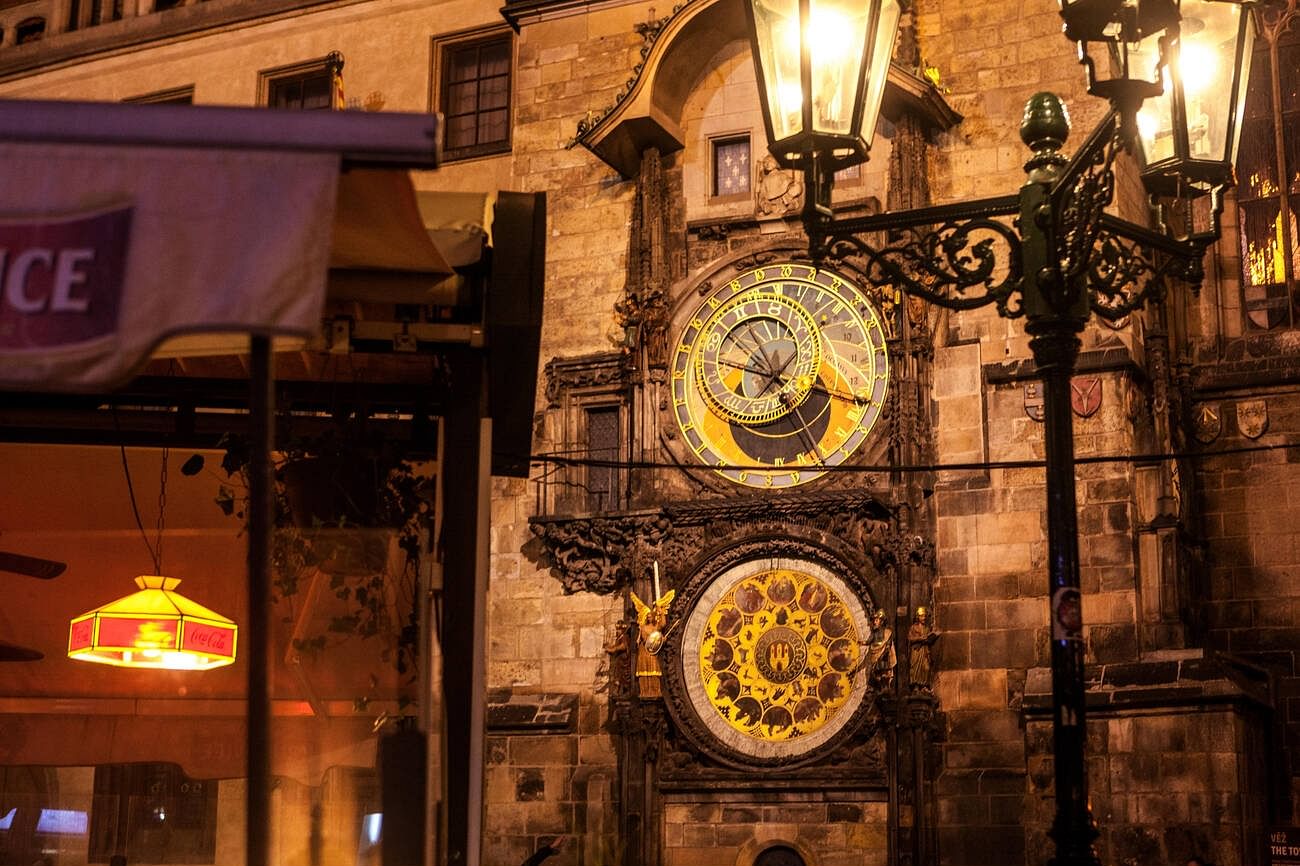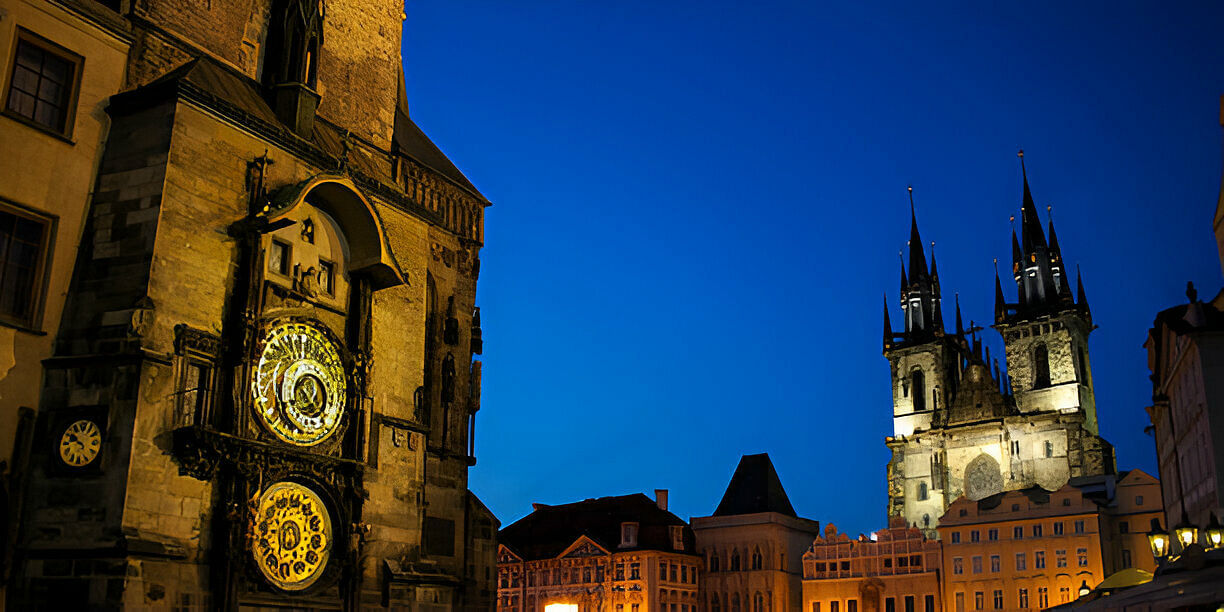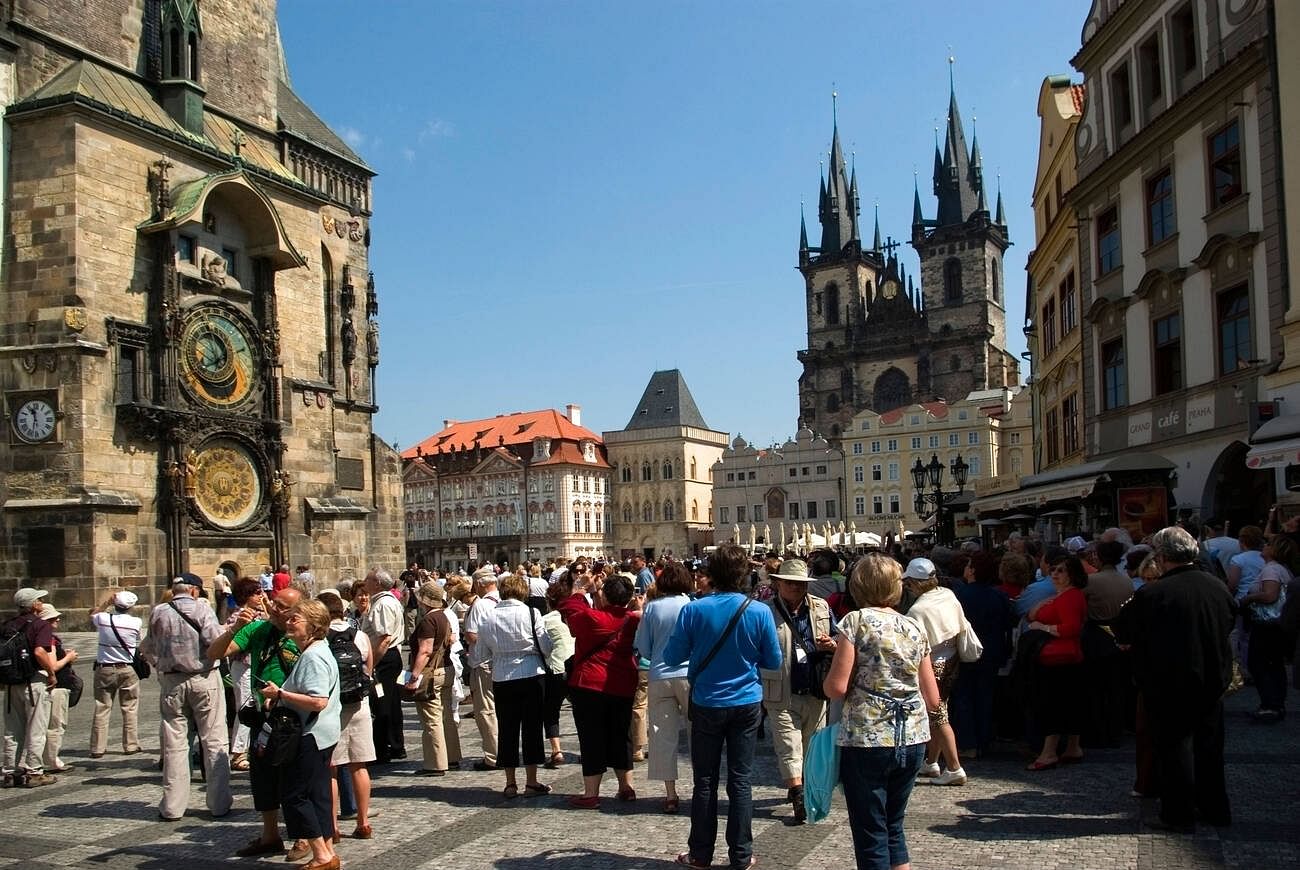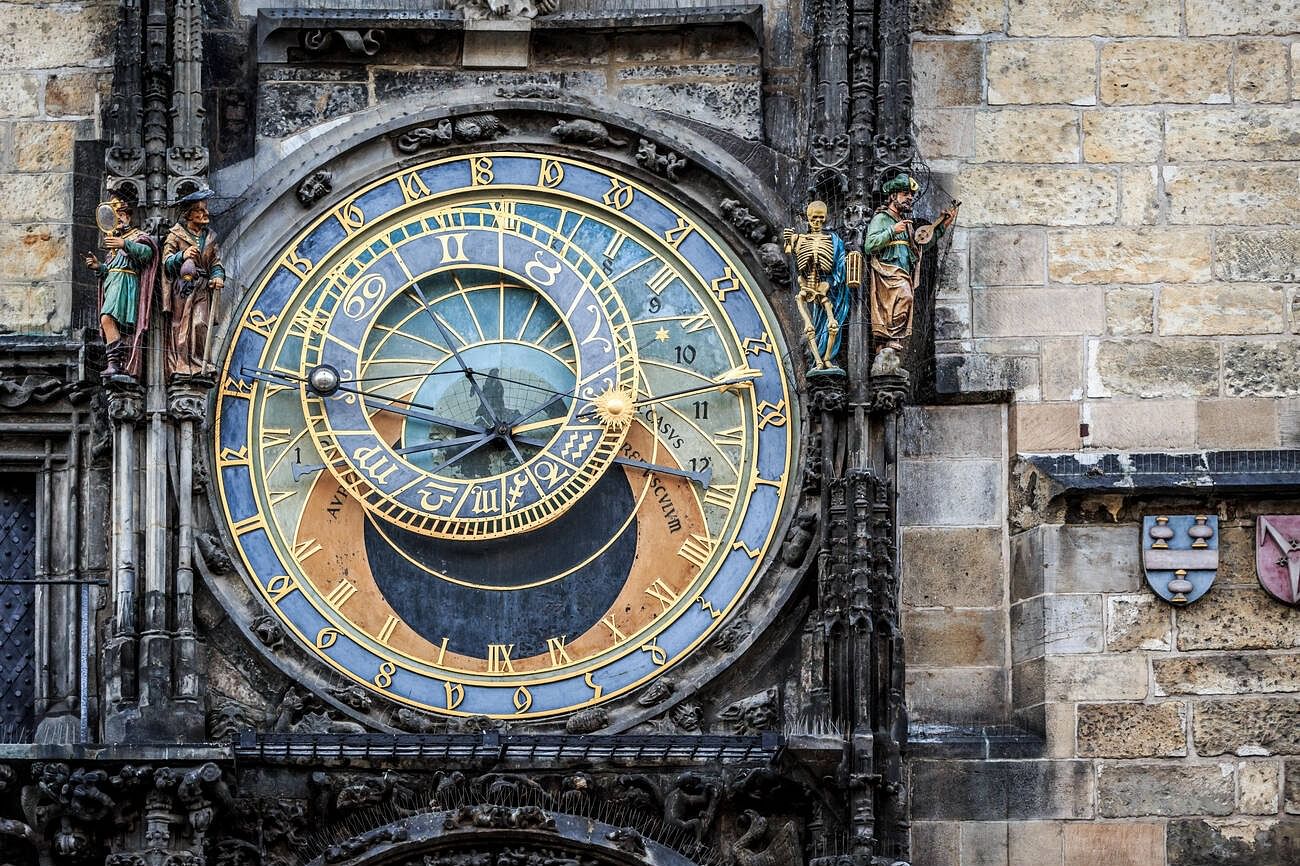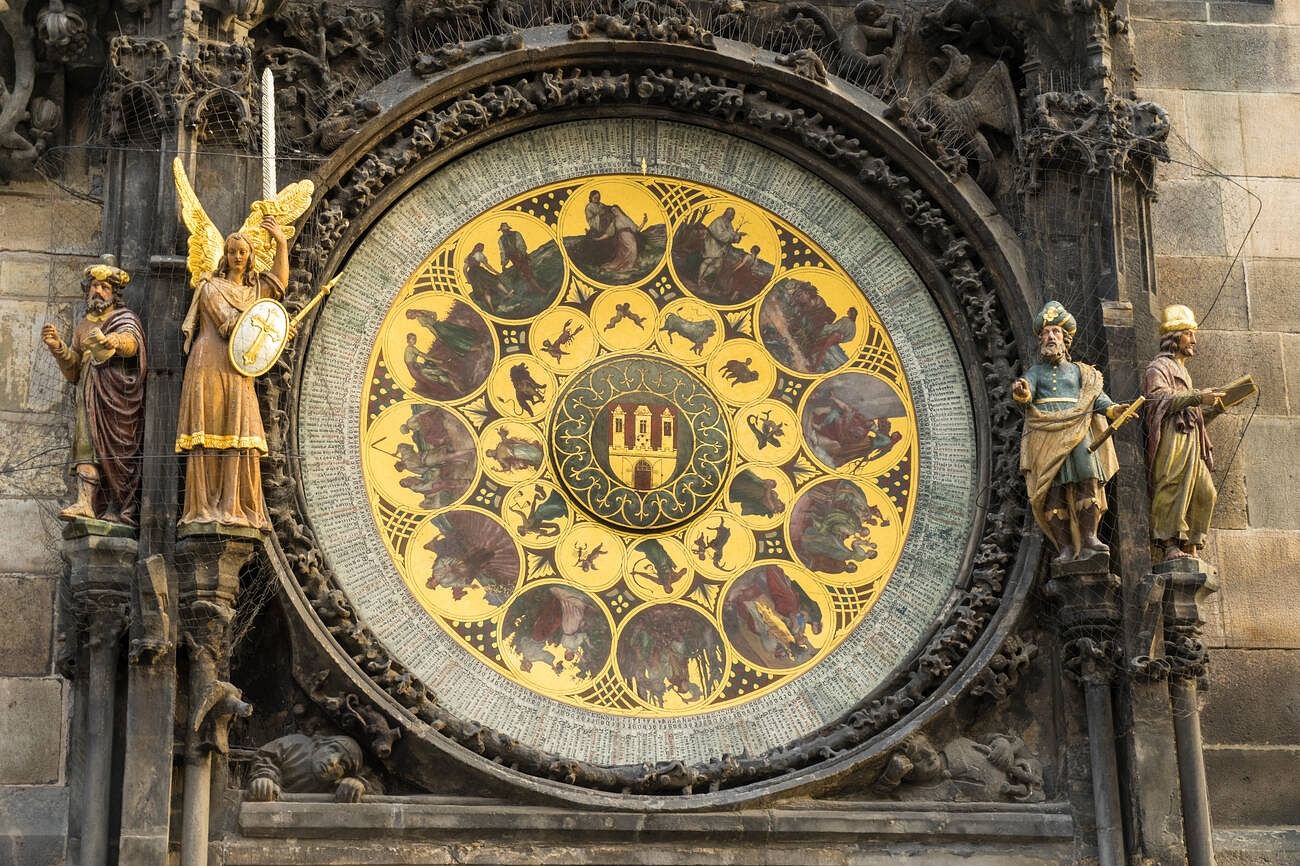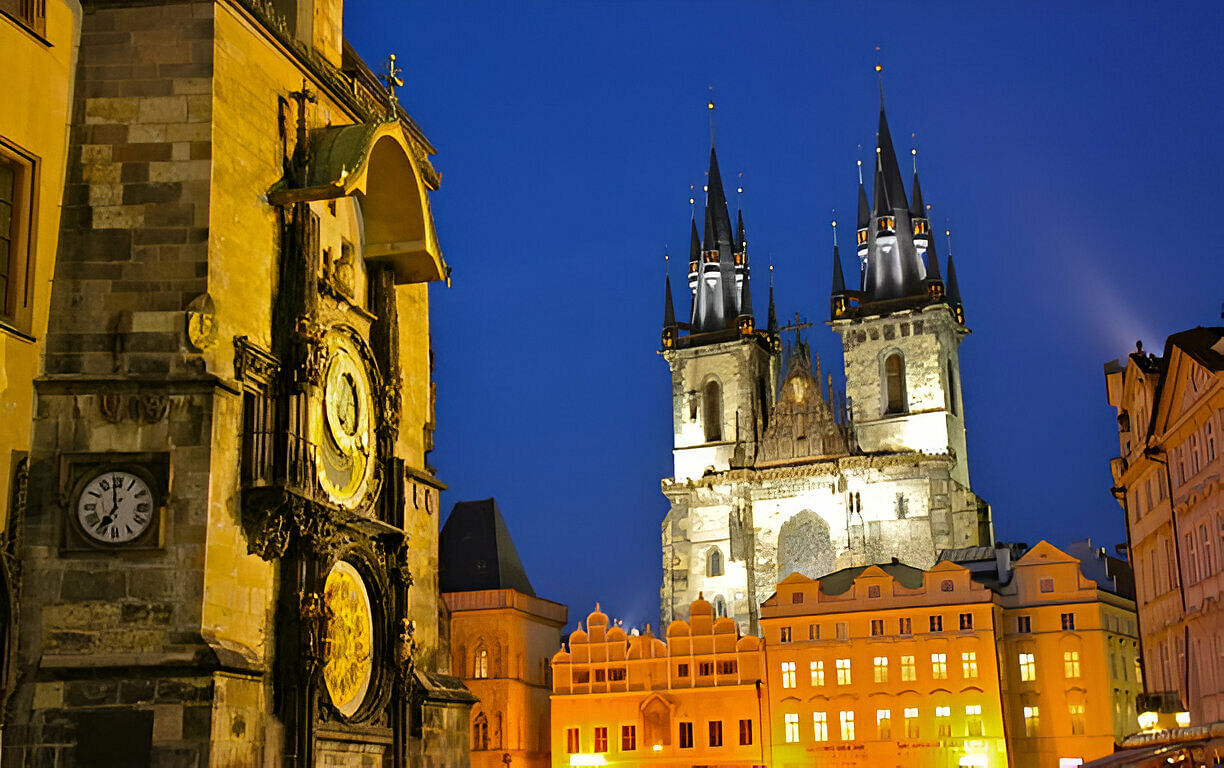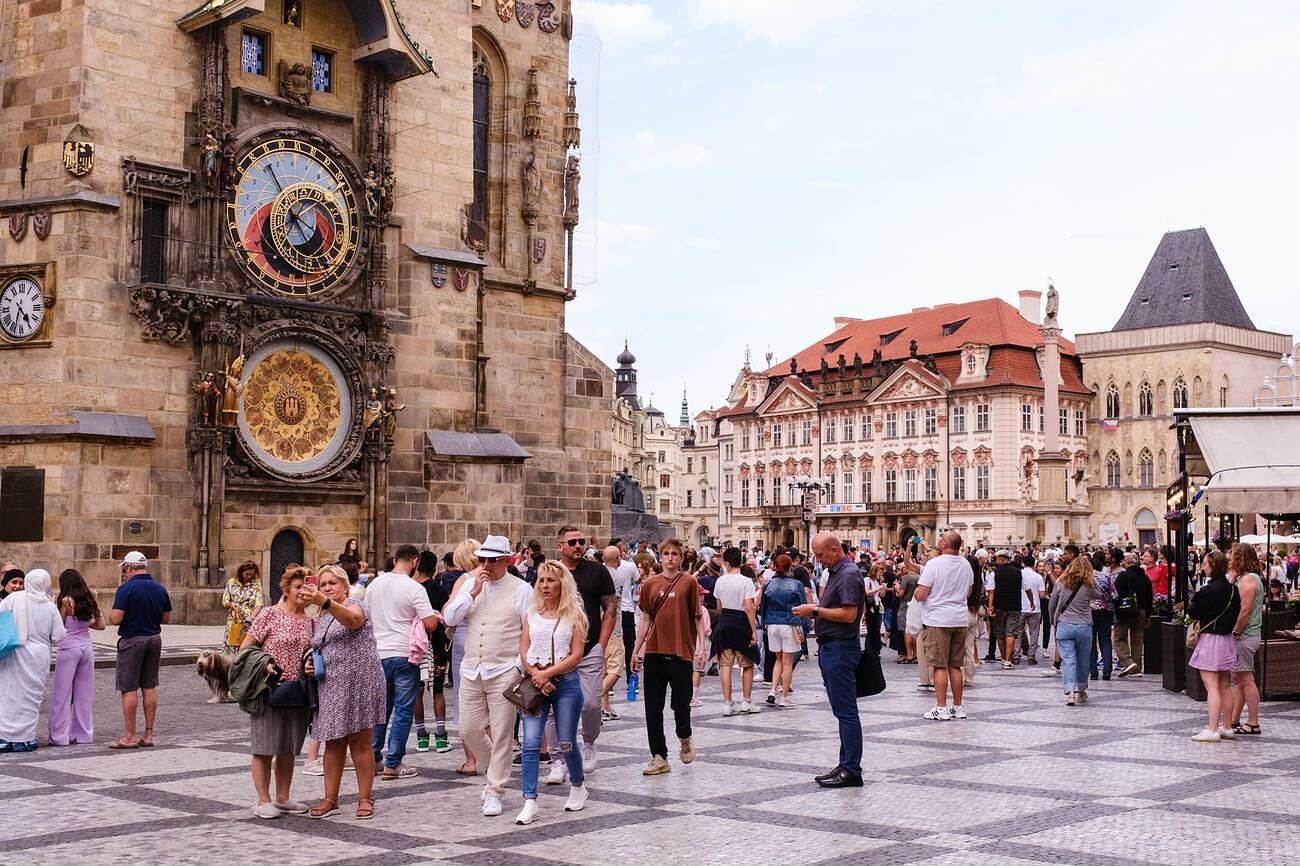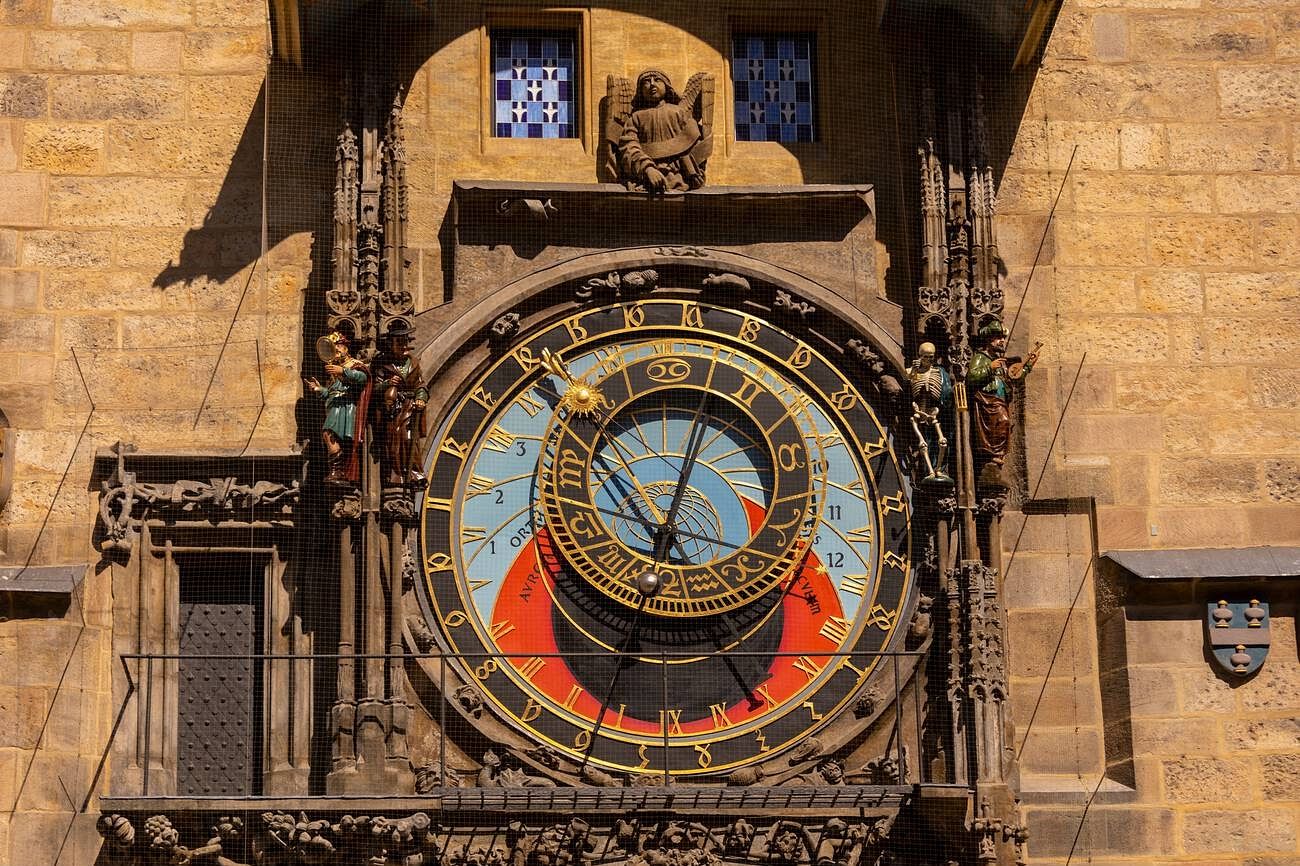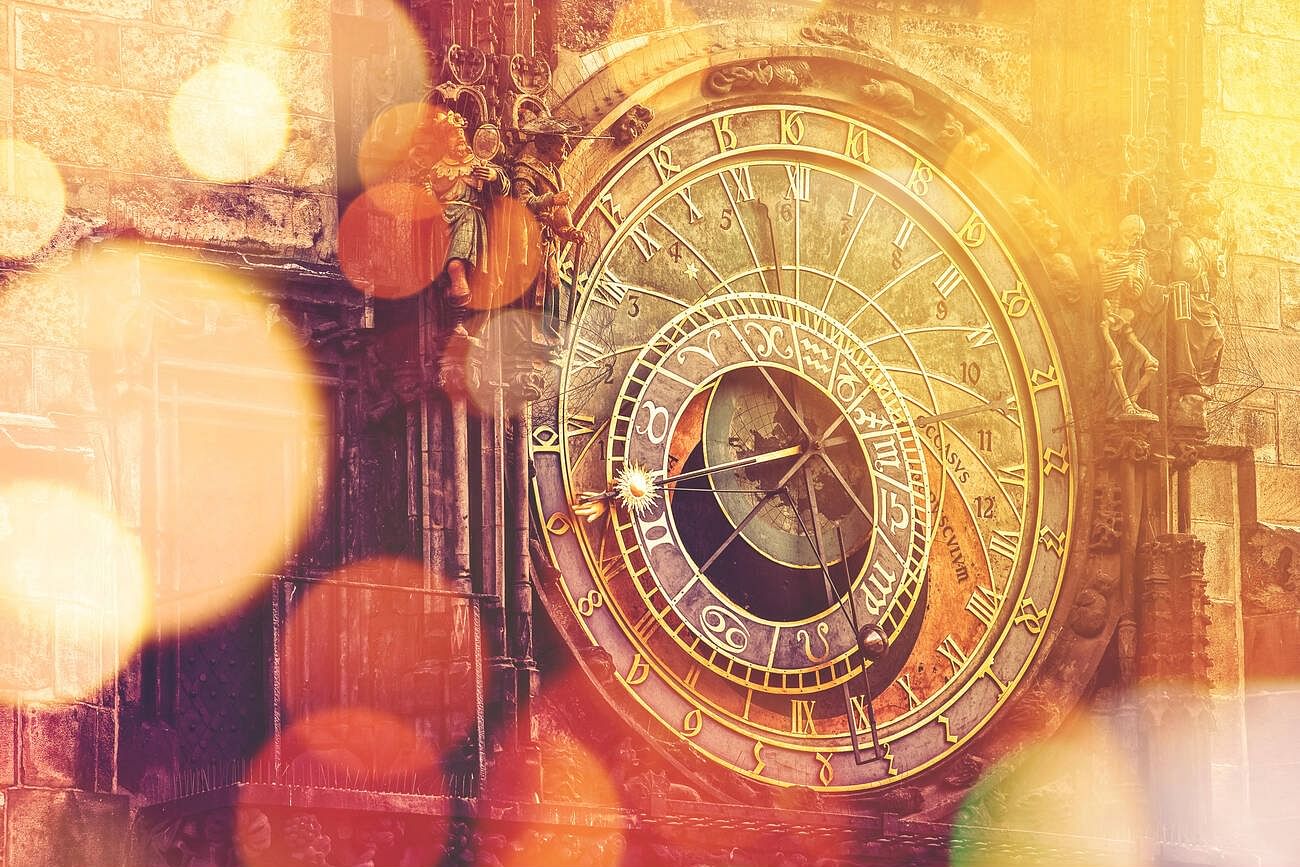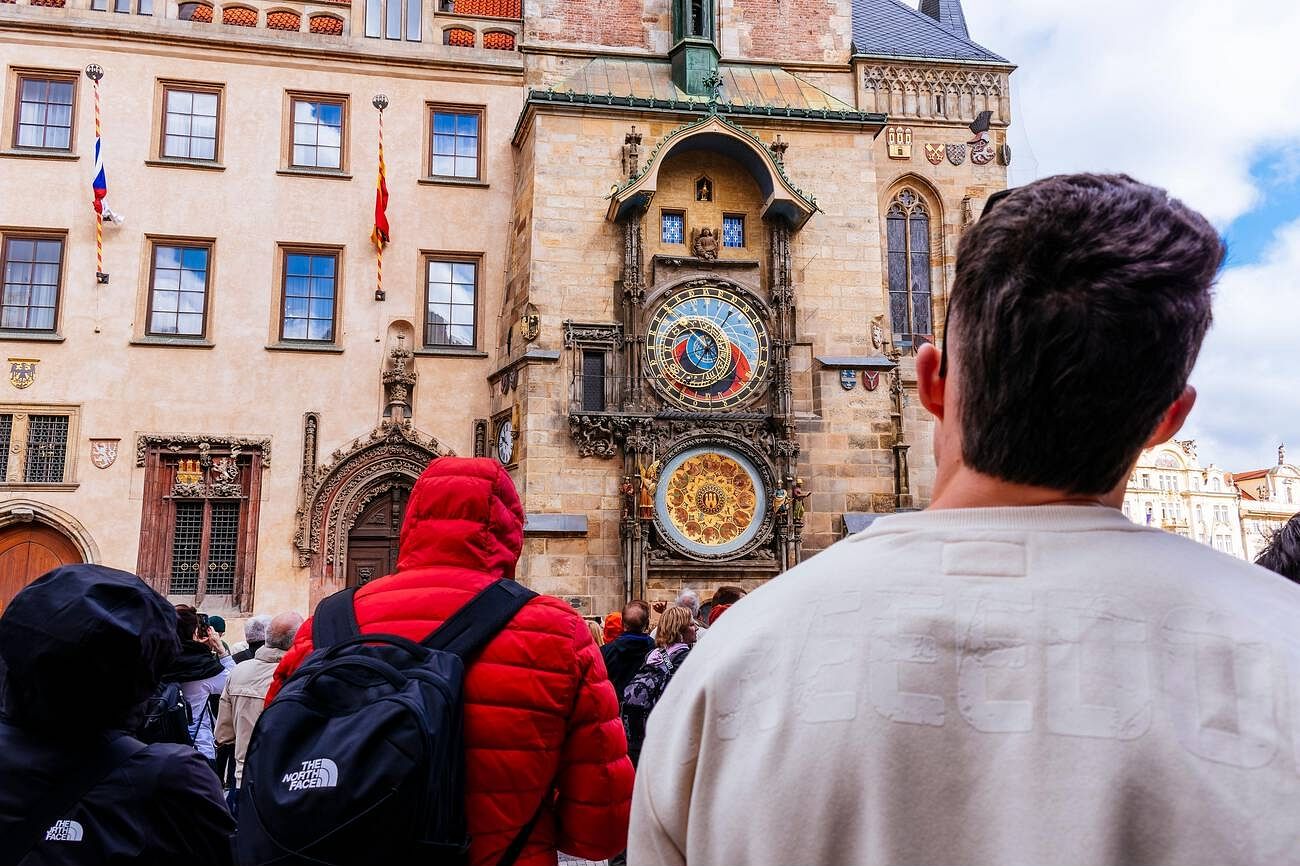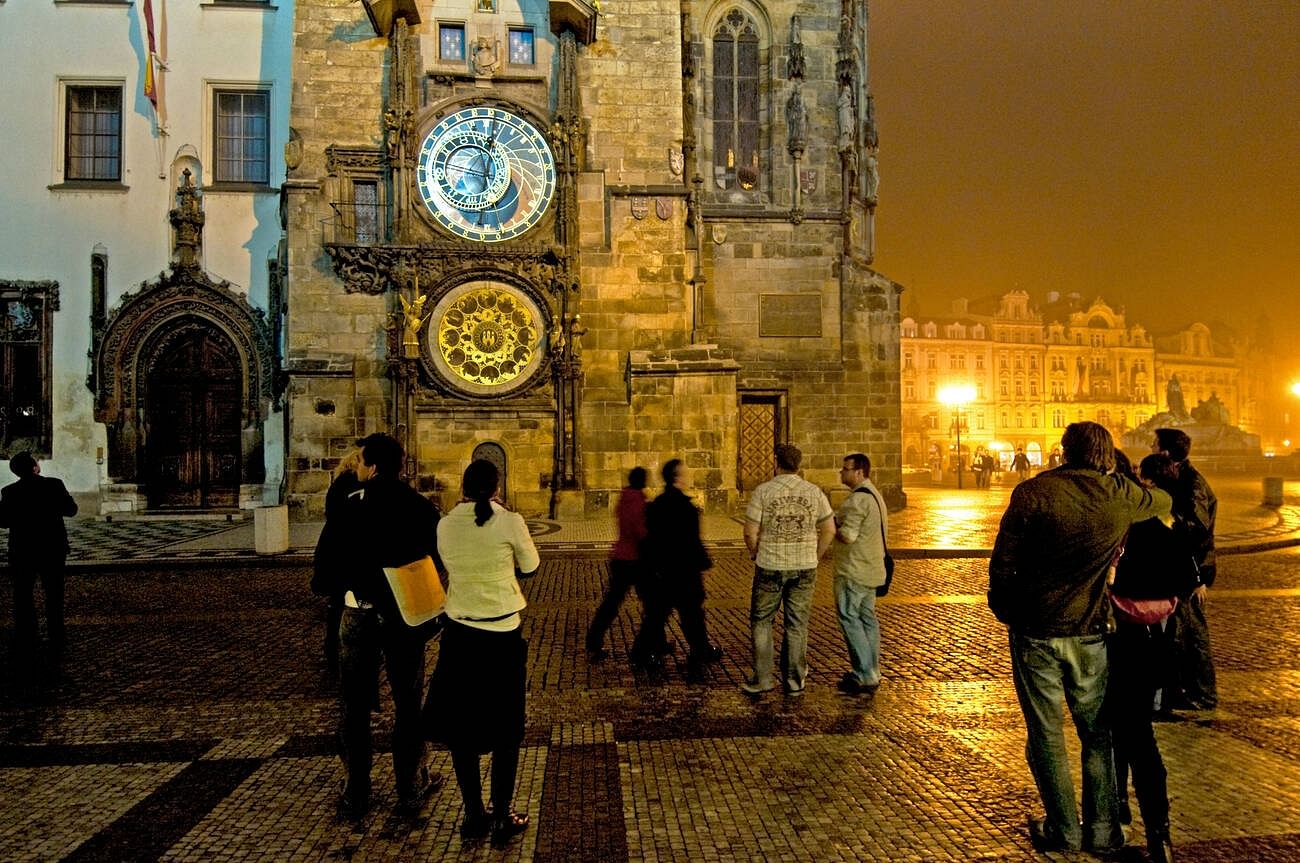A clock so magnificent that it could decide the fate of an entire city? Yes, you heard that right. The enchanting city of Prague holds its destiny in the hands of a clock! Shocking, isn’t it? As you plan your trip, maybe through one of the best
Europe tour packages, you’ll discover that this isn’t just any clock—it’s the Prague Astronomical Clock, a medieval masterpiece that has been ticking for over 600 years, not only marking time but weaving stories of brilliance, betrayal, and an eerie curse.For centuries, it has stood in the heart of Prague, not just telling time but guarding secrets that send chills down your spine. They say this clock holds the city’s fortune, with every tick and chime tied to Prague’s very soul. Crafted by a genius and cursed by betrayal, the clock carries a dark legend—a warning that if it ever stops, disaster will strike.
But this isn’t your average clock. With intricate dials showcasing Zodiac signs, a calendar, and even the positions of the sun, moon, and stars, it was a masterpiece for its time! But did you know the legends and mysteries surrounding this clock go far beyond its craftsmanship? Who—or what—really controls its power? And could its fateful ticking truly determine the future of Prague? Let’s find out!
Suggested Read: 20 Best Places To Visit In Prague On Honeymoon
Scientific and Astronomical Features of the Clock
Before uncovering the legend behind the Prague Astronomical Clock, let’s first talk about its most fascinating features. This iconic clock, the most famous astronomical clock in Prague, has been mesmerizing both locals and tourists since 1410, and it’s not just your average timekeeper. It’s a perfect mix of art, science, and a little bit of medieval magic. Here’s why this clock is so special:- Astronomical Dial: The clock has a cool dial that shows the sky, with the Earth at the center. It’s like a mini map of the cosmos! The dial also has Roman numerals, marking the time in a way that’s pretty different from our usual 12-hour clock. Plus, there’s a zodiacal ring that moves around, showing the position of the sun.
- Sun and Moon Indicators:
- Sun: A golden hand attached to the Sun icon moves around a circle, showing where the Sun is in the sky. It also tells the local time in Prague, uneven hours, and Old Czech Time.
- Moon: A half-silver, half-black ball represents the Moon, showing its phase and position in the sky. The Moon’s arm moves faster than the Sun’s, reflecting its orbit around the Earth. This feature, added in the 1600s, works using gravity.
- The Prague Astronomical Clock Show: Every hour, the clock does its famous “Prague Astronomical Clock Show.” Little doors above the clock open, and out come the Twelve Apostles, moving from left to right. You’ll also see figures of Vanity, Greed, Death, and Lust – they represent the vices of mankind. Death, in particular, rings a bell to remind you that time’s ticking! So, next time you’re in Prague, make sure you catch the show – it’s like watching history tick by, quite literally!
- The Calendar Dial: Below the clock is a calendar that tells you the dates and the names of saints for each day. It’s pretty neat because it’s got images of the months too, giving a little extra flair to the whole thing.
- Old Czech Time: There’s also something called Old Czech Time, which is a special time scale that the clock follows. Instead of counting hours like we do, it counts them backward from sunset. It’s a bit quirky, but that’s part of what makes this clock so unique!
Suggested Read: Prague Castle: A Journey Through History, Art, And Culture
Historical Background: The Birth of the Clock
The Prague Astronomical Clock history is as fascinating as the clock itself! This legendary timepiece first came to life in 1410, thanks to a brilliant clockmaker named Mikuláš of Kadaň and an astronomer, Jan Šindel. Together, they decided to build something truly extraordinary for the Old Town Hall in Prague. And boy, did they succeed!It wasn’t just your regular clock – this was the Prague Astronomical Clock, a medieval masterpiece that not only told time but also showed off the positions of the Sun and Moon, the phases of the moon, and even the zodiac signs. Talk about fancy! Back in those days, this kind of clock was unheard of, and it quickly became the talk of the town.
Over the centuries, the Prague Astronomical Clock has had its fair share of ups and downs, surviving wars and political changes, but through it all, it has remained a beloved symbol of Prague. Even after many repairs and upgrades, the clock still carries the same awe-inspiring features it had all those years ago.
So, the Prague Astronomical Clock history isn’t just about a clock – it’s about creating a timeless wonder that blends science, art, and a little bit of magic.
The Dark Legend: A Curse and Its Impact
The most talked-about aspect of the Prague Astronomical Clock is its legend behind the Prague Astronomical Clock. According to one story, after Mikuláš of Kadaň, the genius behind the clock, finished his masterpiece in 1410, the city council was so impressed that they didn’t want anyone to ever replicate something as magnificent. So, what did they do? Allegedly, they blinded Mikuláš! Yep, you read that right—they blinded him to make sure he couldn’t create another clock as remarkable as this one. Talk about a tragic ending for the talented clockmaker, huh?But that’s not the end of it—this is where it gets even spookier! Some say Mikuláš, angry at being betrayed, cursed the clock. Over the centuries, it’s believed that the curse binds the clock to Prague, and anyone who tries to tamper with it or uncover its secrets will be doomed to bad luck. And if the clock malfunctions or breaks down at an unexpected moment, locals whisper that it’s proof the curse is still working its dark magic. It’s like the fate of the city is tied to the ticking hands of the clock itself!
Other Legends: The Skeleton: Omen or Sign of Hope?
One of the most notable features of the clock is the skeleton that appears during the hourly show. Some believe that the skeleton is an omen—if the clock ever stops working for too long, it could signal bad times for the Czech nation. The idea is that the clock, which has been ticking away for centuries, symbolizes the city’s heartbeat. If it stops, the city’s vitality could be in danger.
But others see the skeleton in a more hopeful light. Rather than a harbinger of doom, it’s viewed as a reminder of life’s fleeting nature, encouraging people to live fully and appreciate every moment. So, while the skeleton may appear ominous, it also carries a message of making the most of the time you’ve got.
Suggested Read: Shopping In Prague: Your Guide To Best Markets and Malls
The Knight and the Sparrow: A Tale of FreedomAnother captivating legend involves a knight imprisoned in a jail above the clock. From his cell, the knight saw a sparrow fly into the skeleton’s mouth. When the skeleton closed its jaws, trapping the bird inside, the knight believed that when the sparrow was freed, he would be too. In this version of the tale, the sparrow symbolizes freedom, and the knight hoped that the bird’s release would bring his own.
This story serves as a charming reminder that sometimes, even the smallest and most unexpected events can hold the key to something much larger—whether it’s freedom or a change in fate.
These legends, along with the clock’s extraordinary design, make the most famous astronomical clock in Prague not just a timepiece but a piece of living history, constantly inviting curiosity and fascination from visitors and locals alike.
The Clock Today: A Living Landmark
The Prague Astronomical Clock isn’t just a timekeeper; it’s a superstar in the heart of Old Town Square! This medieval marvel has been wowing crowds for centuries, and it’s still the highlight of every Prague visit. Whether it’s your first trip or your tenth, catching the clock’s hourly show is a must—it’s like stepping into a live history lesson with a sprinkle of drama.The clock’s importance goes beyond its jaw-dropping looks. It’s a symbol of Prague’s rich heritage, blending science, art, and storytelling into one masterpiece. Want the Prague Astronomical Clock best view? Get there early to snag a good spot in the square or book a table at a nearby rooftop café for a unique angle. The best time to visit Prague astronomical clock? Golden hour! With the sun casting a magical glow, the clock looks straight out of a fairy tale, making it the perfect moment to snap a photo or just soak in the charm. Trust me—this isn’t just a clock; it’s an unforgettable experience!
Best Time of Year to Visit the Prague Astronomical Clock
The best time of year to visit the Prague Astronomical Clock depends on the experience you’re looking for!- Spring (March to May): Mild weather and blooming flowers make it a picturesque season. The Old Town Square is lively but less crowded than in summer.
- Summer (June to August): The city is bustling with tourists, and the clock looks especially stunning under the long, sunny days. Arrive early to grab the Prague astronomical clock best view during this peak season.
- Autumn (September to November): The golden hues of fall create a charming atmosphere around the clock, and the smaller crowds make it a peaceful time to visit.
- Winter (December to February): With festive Christmas markets nearby, winter adds a magical touch to the clock. The sparkling lights and holiday vibe make this the best time to visit Prague astronomical clock.
Suggested Read: 15 Cool Things To Do In Prague On Honeymoon
Location of Prague Old Town Clock
The Prague Astronomical Clock is nestled in the heart of Prague, the capital city of the Czech Republic. Located on the southern wall of the Old Town Hall in Old Town Square, this medieval masterpiece is surrounded by the charm of cobblestone streets, historic buildings, and bustling cafés.This iconic landmark is just a short walk from other major attractions like Charles Bridge and Wenceslas Square. Its central location makes it a must-visit spot while exploring Prague’s enchanting city center.
Address: Old Town Square 1, 110 00 Josefov, Prague, Czech Republic
Astronomical Clock Prague Tickets Price
The Prague Astronomical Clock is free to view from the Old Town Square. However, if you wish to enter the Old Town Hall and explore the clock or visit the tower, you will need Astronomical Clock Prague tickets.- General Admission: Approximately 300 CZK (around ₹1,380 INR).
- Discounted Admission: For children (6-15 years), students (up to 26 years), seniors (65+), and people with disabilities, the price is 150 CZK (around ₹690 INR).
- Tower Entry for Panoramic Views: 130 CZK (around ₹600 INR).
It’s always a good idea to check the official website for the latest pricing and any available special offers!
Opening Hours of Prague Old Town Clock
The Prague Astronomical Clock is visible to the public 24/7, but the most popular time to visit is during the hourly show, which happens every hour from 9 AM to 11 PM.The clock is always on display, and you can enjoy its beauty from the outside anytime. However, if you’re interested in visiting the Old Town Hall where the clock is located, the building’s opening hours are as follows: from 10 AM to 7 PM on Saturdays, Sundays, Tuesdays, Wednesdays, Thursdays, and Fridays. On Mondays, the Old Town Hall opens slightly later, from 11 AM to 7 PM.
Tips to Visit Prague Astronomical Clock
- Arrive Early: To get the best view, arrive a few minutes before the hour to catch the clock’s famous chime and moving figures.
- Avoid Crowds: Visit in the early morning or late evening for a quieter experience, as it gets crowded during peak hours.
- Bring a Camera: The clock and surrounding Old Town Square are incredibly photogenic, so don’t forget your camera!
- Check the Show Times: The clock performs every hour from 9 AM to 11 PM, so plan your visit around those times to catch the full show.
- Explore the Area: While you’re there, take time to enjoy the charm of Old Town Square and nearby attractions like Charles Bridge and Wenceslas Square.
- Be Ready for the Legend: Don’t miss learning about the clock’s dark legend—it’s a part of its mystery and allure!




